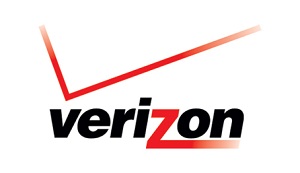Verizon CFO: Intel Media Buy Speeds Up FiOS’s Next-Gen IPTV Plan

While speculation runs rampant that Verizon Communications’ proposed purchase of Intel Media’s OTT video assets marks an inevitable step toward the creation of a “virtual” MSO that the telco could use to sell a full-freight pay-TV service outside its FiOS territories, one of Verizon’s top execs downplayed that potential scenario during the company’s fourth quarter earnings call.
Verizon chief financial officer Fran Shammo reiterated that his company intends to integrate Intel Media and its “OnCue” platform with its fiber-fed FiOS video service, thus speeding up the telco’s multiscreen IPTV transition while also creating closer ties with Verizon Wireless’s 4G/LTE network.
“As far as the OnCue acquisition…the focus here is really to accelerate the availability of the next generation IP video service, which will integrate into FiOS,” he said. In addition to offering an opportunity to reduce video service costs, the deal “really accelerates us…if we were [trying] to build IPTV versus buying the IPTV technology,” he added.
Verizon's FiOS TV service still relies heavily on QAM/MPEG transport to deliver video services to the TV. The plan involving the Intel Media assets suggest that the telco is preparing to deliver its full video service over IP to TVs and to mobile devices.
As for enabling Verizon to offer FiOS video services to customers over-the-top, Shammo pointed to Verizon Digital Media Services, the cloud video unit that recently bought content delivery network company EdgeCast and upLynk, a startup that has developed a streamlined multiscreen video publishing platform that already powers authenticated apps such as Watch Disney and Watch ABC. VDMS’s client base does include Redbox Instant by Verizon, a Netflix competitor that rents out DVDs and games and offers an on-demand streaming library of movies.
VDMS’s buy-versus-build approach has enabled the unit to more rapidly establish the kind of cloud-based, multiscreen video architecture that Comcast has developed with X1, its IP-capable
video app platform, and VIPER, the MSO’s largely home-grown multiscreen video distribution pipeline that uses adaptive bit rate streaming to deliver services to a broad mix of IP-connected devices such as PCs, gaming consoles, tablets, smartphones, smart TVs and video gateways and clients. Comcast is using that same platform to support its expanding trials of Xfinity On Campus, an IP video service tailored for college students.
The smarter way to stay on top of the multichannel video marketplace. Sign up below.
“We’re positioning ourselves strategically to be in a position to competitively compete around the whole mobile first world, and video,” Shammo said on Tuesday.
Shammo added later that Verizon has no plans to build FiOS beyond the limits of its current local franchise agreements, which today covers about 18.5 million homes passed and roughly 15.3 marketable homes.
Although the growth of FiOS’s video and broadband services slowed down in the fourth quarter, “we still took market share and continue to increase our penetration,” Shammo said, noting that New York continues to be FiOS’s fastest-growing market.
Separately, a source confirmed reports that Verizon is buying Intel Media and its OnCue platform for about $200 million, well below the $500 million Intel reportedly had been seeking when rumors of a coming deal heated up last fall.
